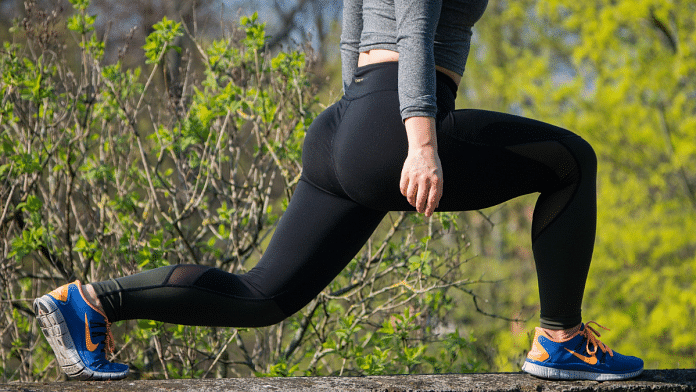Many people find it difficult to lose weight despite adopting particular diets or increasing activity levels and look for easier alternatives. Spot reduction is a popular method to reduce fat from specific regions of the body. The common belief is that specific diets and exercises can target these spots and cut down fat from those areas. However, there is not much scientific literature to support the claim that foods, diet, and exercises can help you reduce portion fat.
The device-based spot reduction services offered by a variety of US companies and agencies are non-invasive in nature and utilise methods like cryolipolysis, radiofrequency, and laser lipolysis to decrease or eliminate stubborn fat pockets in specific body areas. These Food and Drug Administration-approved procedures are efficient, safe, and produce significant results. There is, however, no follow-up on the consistency of these outcomes.
Why do people want spot reduction?
Obesity and related non-communicable diseases are spreading like wildfire across the world. Sedentary lifestyles, poor dietary habits, chronic stress, hectic work schedules, and lack of sleep are the reasons behind it. Obesity is responsible for approximately 3 million deaths every year according to the World Health Organization (WHO). Eliminating obesity and staying in shape are two major global health goals. Maintaining an ideal body weight has countless benefits, including improved health and reduced risk of diabetes and heart diseases.
Ideally, there is a proportionate distribution of fat across the body, but excess fat may accumulate in specific areas such as the abdomen, triceps, buttocks, and thighs. The region where fat accumulates depends on gender, age, physiological condition, genetic predisposition, and lifestyle. Men tend to accumulate excess fat in the abdomen region throughout their lives. In contrast, women accumulate more fat around their waistlines and buttocks during child-bearing years. It is common for people to fall for diets and exercises that claim to reduce stubborn fat from specific areas.
Also read: Your food packet can be ultra-processed if it has more than 5 ingredients. Read the label
Science refuted the spot reduction claim
Physiologically, weight loss occurs when adipocytes, or fat cells, release stored fat to provide energy. Fats are stored in the human body as triglycerides and are difficult to break down. Fatty acids must first be cut into glycerol molecules before the body can use them. The fatty acids then travel through the bloodstream to the muscle cell where they are converted into energy. Simply put, the body doesn’t want to use stored fat as energy. While exercising, energy can be sourced from any part of the body and not just the portion that’s targeted. Therefore, exercising your abs won’t make you lose fat from the abdominal area.
Additionally, most scientific studies have refuted spot fat reduction claims. In a 2007 study, 104 subjects were measured for subcutaneous fat before and after resistance training. The subjects trained their nondominant arm under supervised conditions for 12 weeks. It was found that the fat loss was spread across the body and not just from the exercised arm. A 2015 randomised control trial compared the effect of diet and abdominal resistance training on abdominal subcutaneous fat thickness and waist circumference in 40 overweight and obese women. There was no significant difference in weight loss found in people who followed the diet alone and those who followed the combination of abdominal resistance exercises and dietary modification.
Also read: Not just sugar and lack of exercise, but salt and dehydration are behind obesity epidemic
What to do instead
Losing body fat requires a healthy diet. A balanced meal with a variety of foods ensures adequate nutrition and prevents unnecessary weight gain. Make sure you eat protein-rich foods in every meal, control portion sizes, avoid or limit ultra-processed foods, and consume lots of fiber. There should be a calorie deficit to lose weight at the same time. Eat home-cooked, balanced meals that are designed in accordance with your fitness goals. Junk foods are the major contributors to excess calorie intake, but overeating healthy foods isn’t advisable either. Moderation is the key. Eat only when you are physically hungry and stop as you feel full. Don’t encourage emotional eating.
Regular physical activity combining different types of structured exercises is the way to achieve sustainable weight loss. Among these exercises, the best way to lose weight is to adopt high-intensity workouts and full-body exercises. Full-body exercises such as deadlifts, push-ups, and pull-ups lead to more calorie burning and fat loss from the entire body. Exercise that involves short periods of intense activity, followed by a short period of recovery, is known as high-intensity interval training (HIIT). Practice different cardiovascular exercises – running, cycling, swimming, dancing. Cardio exercises involve large muscle groups and burn calories effectively. Combine resistance training and cardiovascular exercises to get the most out of physical activity and fat loss. Combining two exercises produced the best results.
There is no way to control which part of the body will lose fat. Exercising and following a specific diet won’t reduce fat from one targeted region. Although spot-specific exercises like hamstring curls can strengthen and tone stomach muscles, the results will not be visible until you lose overall body weight. For effective and sustainable results, combine cardio, strength training, and a nutritious diet.
Subhasree Ray is Doctoral Scholar (Ketogenic Diet), certified diabetes educator, and a clinical and public health nutritionist. She tweets @DrSubhasree. Views are personal.
(Edited by Humra Laeeq)



